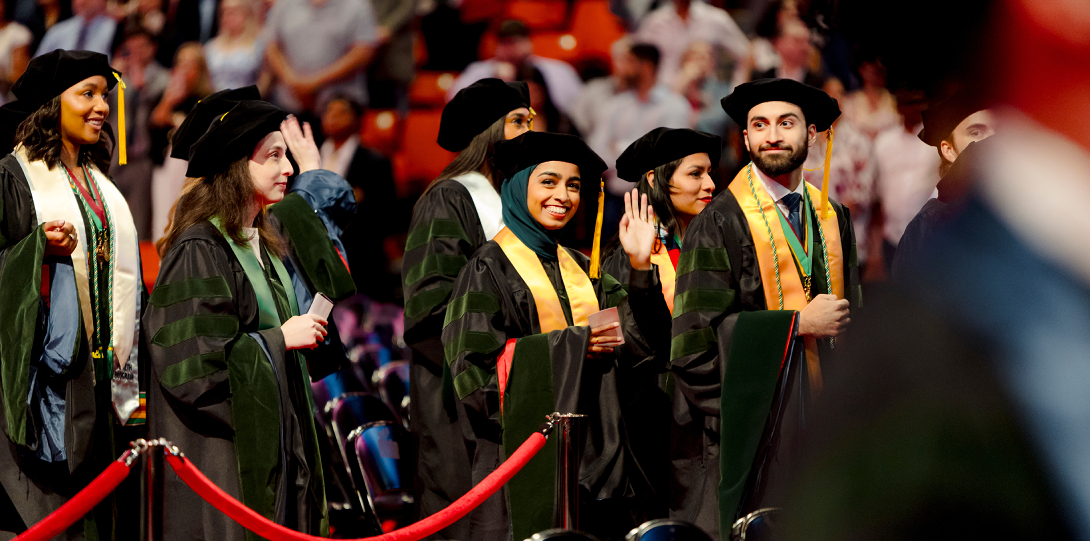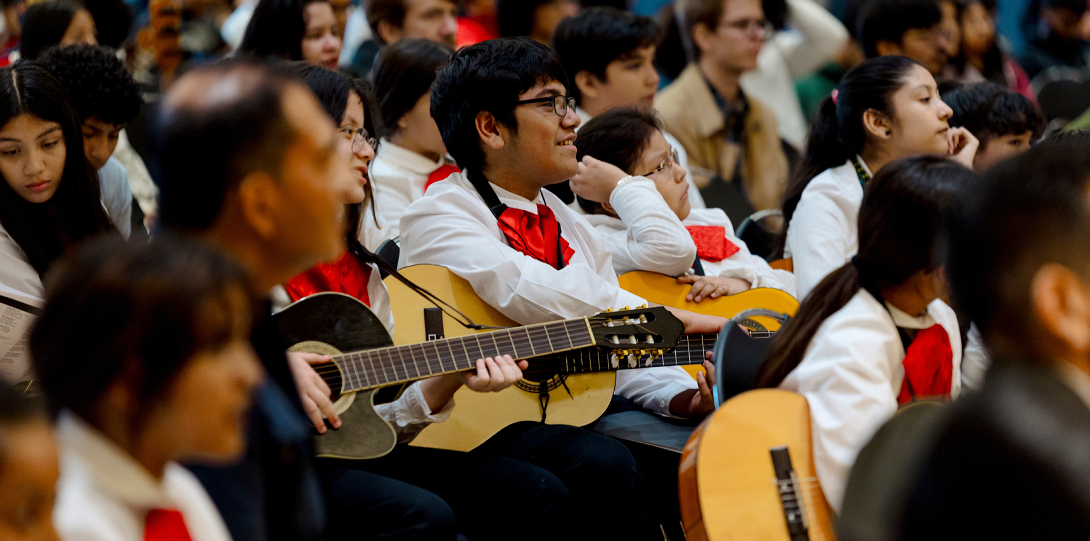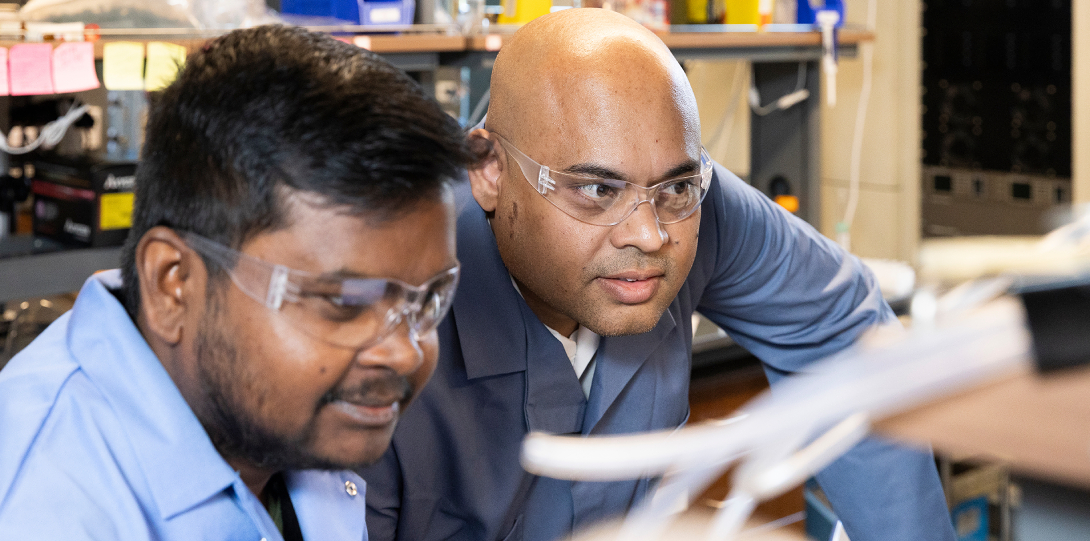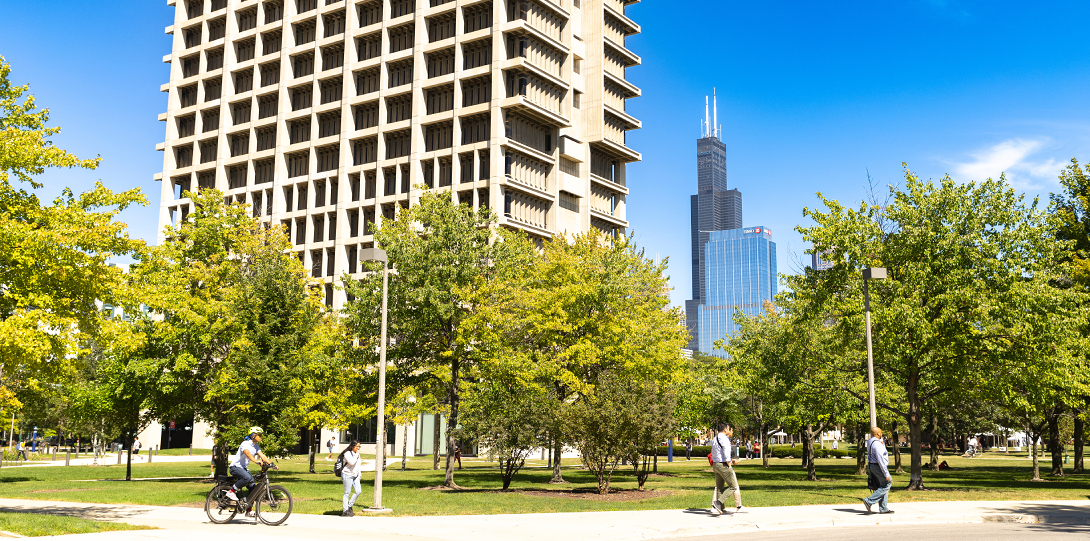Photography and video
Intro
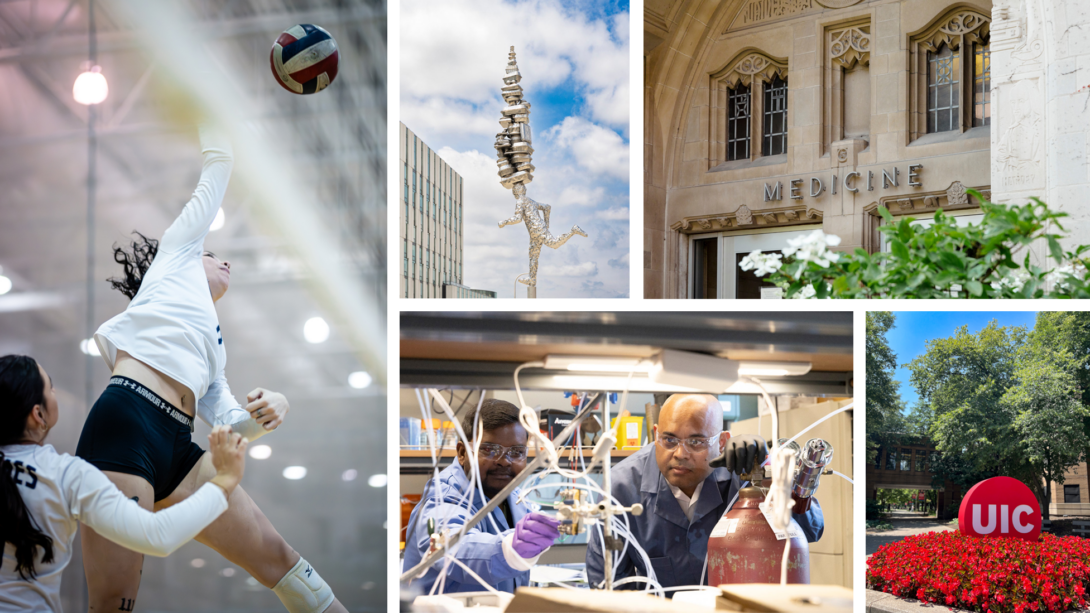
Visually appealing photography and videography are important components of UIC’s identity. They provide perspectives on campus life and living in Chicago and illuminate the university’s ethos. Visual assets used in communications materials should feel true to the university, be authentic and represent our diverse community.
Best practices
Photography is a key element of compelling, influential storytelling and marketing. Our visual style reinforces UIC’s dedication to authenticity and a unified brand. Most images should be candid and use natural light. Avoid overly stylized or staged images.
People
Balance individual and group photographs to highlight both the personal story and the collective experience of being a part of the UIC community. A collection of photographs should show the diversity of subjects the university represents.
Academics and activities
Photos depicting academic pursuits and other activities should show engagement, collaboration and focus.
Places
For outdoor photography, choose perspectives and lighting that add interest and are evocative. The goal is to provide a sense of place and convey the experience of living on campus and in the City of Chicago.
Videography
Done well, video can be a powerful communication tool and an effective way to reach an audience. From scripting to shot style, videos should be strategically planned and well-produced. It is especially important to use professional videography to showcase UIC in its best light.
Enjoy UIC’s videos on YouTube.
Be brief
The ideal video length is typically less than two minutes. A clip posted on social media should be no longer than 45 seconds. Attention spans are typically short; getting the message out quickly and in an engaging manner will help keep audiences watching to the end.
Accessibility and ADA compliance
The university is committed to accessibility. For more information on creating accessible videos, visit Making Audio and Video Media Accessible.
Use captions
Captioning videos is a requirement for any university website and social media channel. For more information on creating accessible captions, visit Captions/Subtitles.
There are separate captioning guidelines for the seven health sciences colleges which adhere to co-branding guidelines set by Strategic Marketing and Communications and the Office of the Vice Chancellor for Health Affairs. These use a co-branded logo and a short statement at the end of each video. Contact vcha@uic.edu for access to co-branded logos.
Copyright and permissions
When working with outside videographers, make sure all contracts specify that UIC will own exclusive rights to the use of the images. This will allow UIC to use the images for current and future projects without having to purchase additional rights. No image or video may be used for commercial or advertising purposes without written permission from University of Illinois Chicago.
Photography and video resources
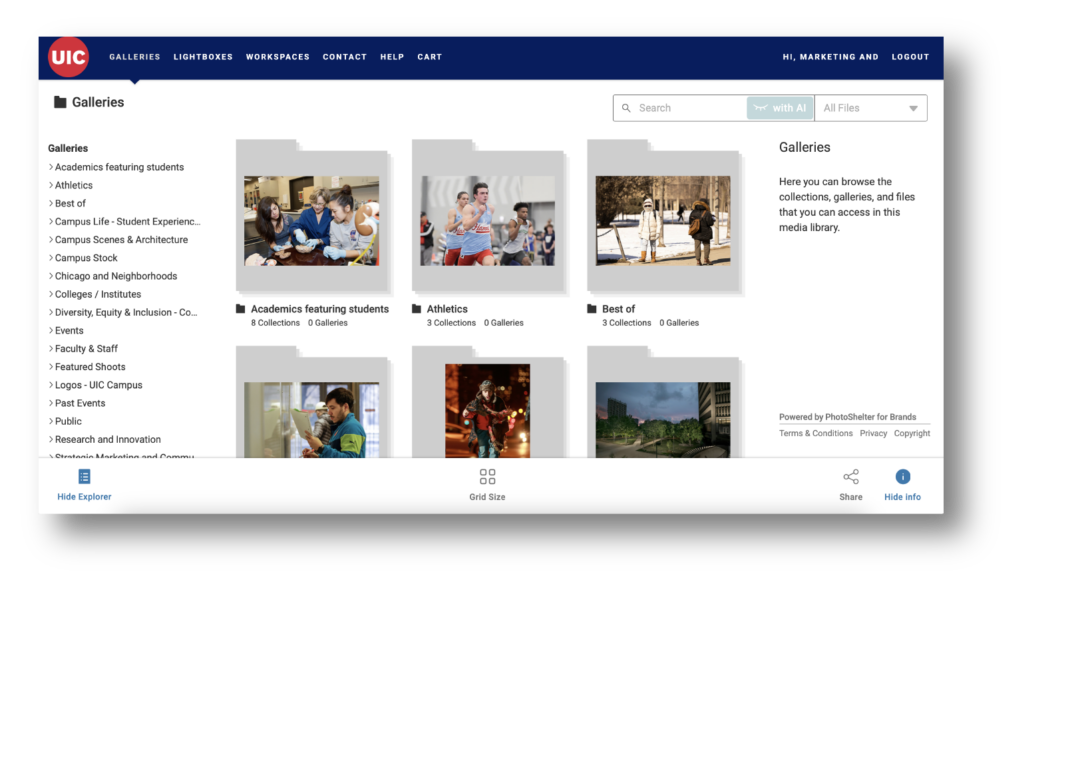
UIC Photoshelter
Photoshelter houses an extensive, ever-growing collection of thousands of images of people, events, campus scenery and more. You can access Photoshelter using your NetID and password.
Photo and video guidelines
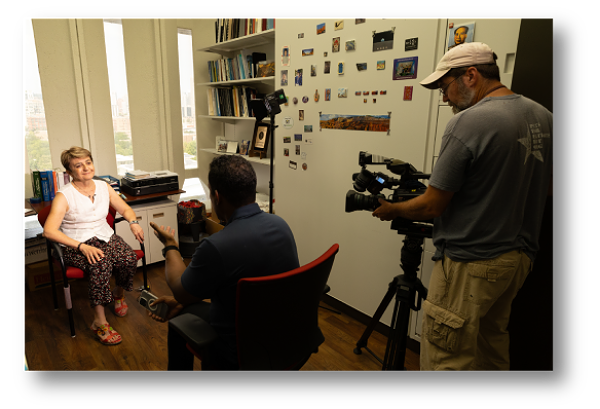
Photo and video guidelines
Photo and video guidelines must be followed for all forms of cameras and video recording devices for personal, professional and media purposes.
Consent forms and public notices
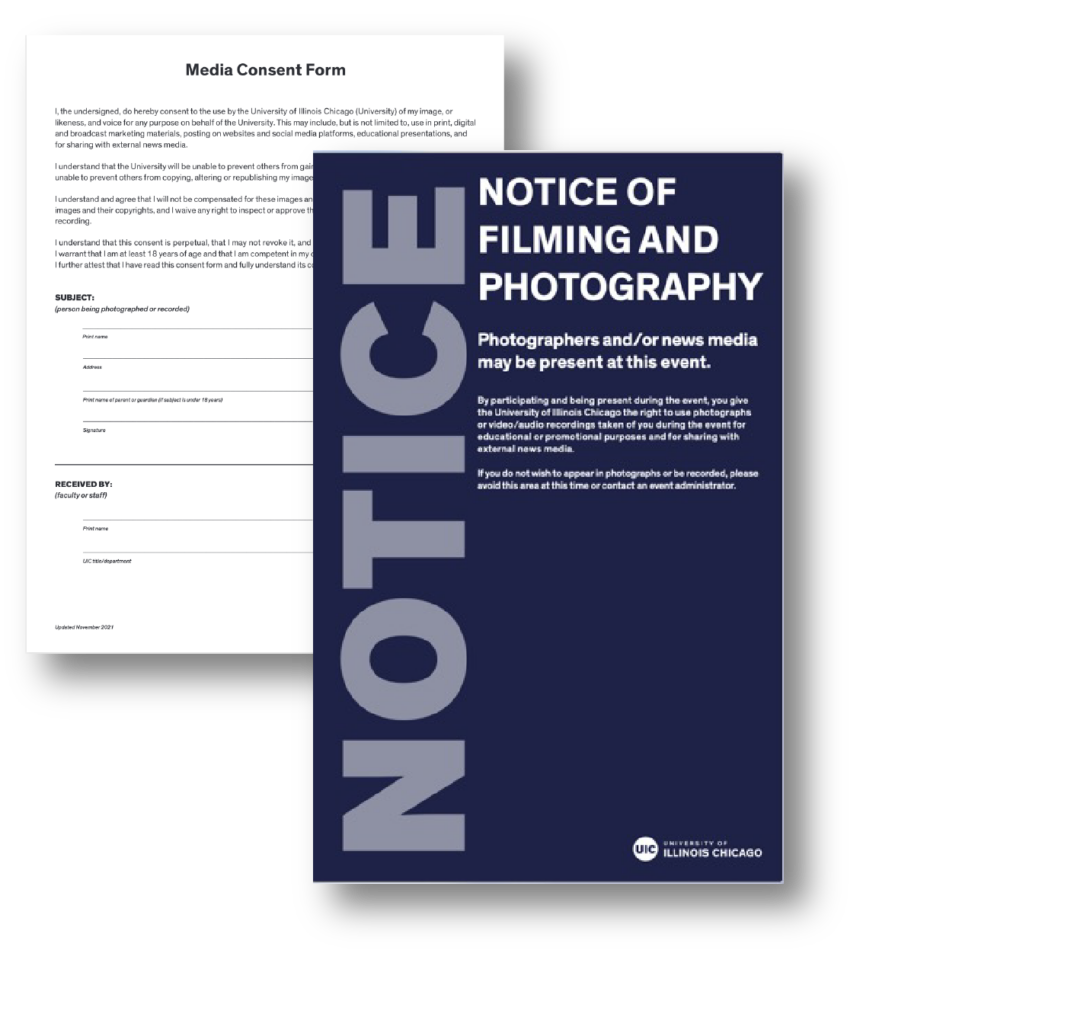
Consent forms and public notices
All photographers taking photos on university property or of university events must follow UIC’s consent protocol and obtain appropriate forms from any student, faculty member, staff person, minor or member of the public who is visibly recognizable and prominent in the photo.
Creative and Digital Services

Creative and Digital Services
Creative and Digital Services has staff videographers available on a fee-for-service basis. Services include on-site event photography and videography, as well as video editing.
Captioning guidance
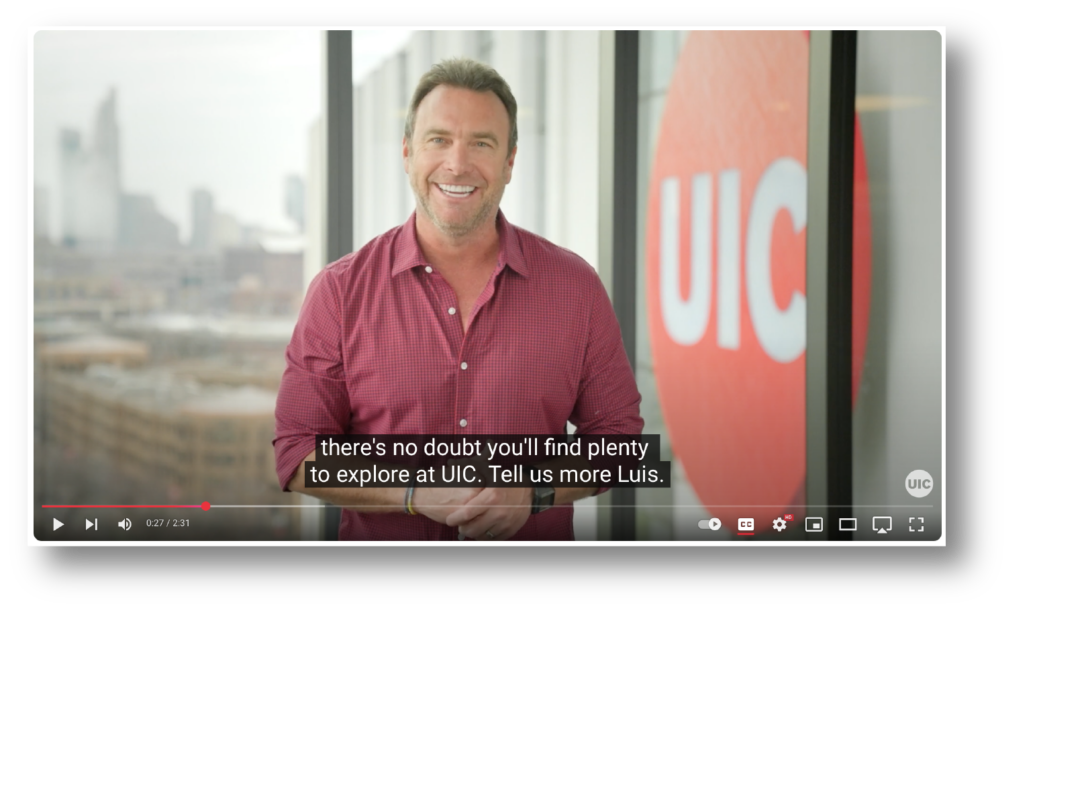
Captioning guidance
There are many reasons to use captions, including laws requiring synchronized captions. Captioned videos allow for universal access to videos and enable allow search engines to find specific text.
